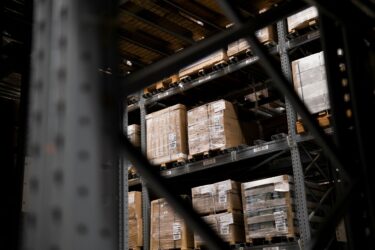
Contents
- The Scope 3 Data Problem
- Measuring Scope 3 Emissions
- Using EEIO Emission Factors
- Scope 3 Data Collection
- Value Chain Carbon Accountability
- Calculating Scope 3 Emissions
- Scope 3 Accountability for Suppliers
- The Anthesis Scope 3 Solution
- Contact Us
Share this article
The Scope 3 Data Problem
Every day, more organisations set science-based net zero targets, aligning their carbon reduction strategies with global climate targets. But as they turn from target setting to target achievement, they run into a stark realisation – they lack the data needed to effectively reduce their carbon footprint and to define KPI’s for tracking progress.
To understand the root of this data problem, and why it matters, we need to look at how organisations measure their carbon footprint.
An organisation’s carbon footprint is comprised of three types, or scopes, of emissions:
- Scope 1 consists of emissions generated directly by an organisation, typically through its use of fossil fuels on site and in company-owned vehicles and equipment.
- Scope 2 consists of emissions from an organisation’s purchased electricity and energy.
- Scope 3 consists of all other emissions associated with an organisation’s value chain – the goods, services and activities they rely on, or enable.
Measuring Scope 3 Emissions
Organisations generally have a good handle on their Scope 1 and 2 emissions. These are relatively easy to measure directly, providing organisations with actionable data that shows where and why emissions occur, the efforts that can be made for each targeted reduction, and the measured effects of these efforts.
The problem arises in Scope 3, which for an average organisation, accounts for around 90% of their total carbon footprint. Organisations often cannot measure their impacts directly since they occur throughout their value chain and beyond their direct sight and control. To get around this, many organisations estimate Scope 3 using their available spend-based data and environmentally extended input-output (EEIO) emission factors. In essence, this involves applying a standard sector-specific carbon factor (e.g., agriculture, manufacturing, banking) to what an organisation spends in that sector. For example, if a company spends £1m/year on manufactured goods, it multiplies this figure by the standard EEIO manufacturing carbon factor (#.## kgCO2e/£).
The use of EEIO emission factors
The use of EEIO data to estimate an organisation’s carbon footprint is useful for getting an initial sense of where Scope 3 impacts are greatest, and where reduction efforts should be focused, but it is not suitable for informing or measuring reduction efforts. That’s because EEIO estimates are only sensitive to changes in spending; they cannot measure or inform real emissions reduction efforts on the ground beyond reducing spend. As the old saying goes, “you can’t manage what you can’t measure”. So, as organisations set their sights on achieving their net zero targets, a top priority must be transitioning to better quality Scope 3 data that, similar to Scope 1 and 2 data, shows where and why impacts occur. Only then will they be able to come up with effective reduction strategies that can be measured and tracked.
So, what is the solution to this Scope 3 data problem?
Scope 3 Data Collection
To solve the Scope 3 data problem, organisations must move beyond secondary data sources and obtain organizational emissions and/or carbon footprint data and reduction forecasts directly from their suppliers for the products and services they provide. This might sound simple enough, but the implications are massive. It means transforming the way customer organisations and their suppliers interact and placing carbon accountability at the core of their relationship.
Implementing a well-rounded supplier engagement strategy is often key to helping build and strengthen the relationship between organisations and their suppliers. While this may seem like added effort, the benefits are equally massive, for suppliers, their customers, and the climate.
What does Value Chain Carbon Accountability mean for Customer Organisations?
Transitioning to supplier operational and product level data for Scope 3 will do nothing less than revolutionise an organisation’s ability to achieve its net zero target, enabling it to see for the first time:
- What their Scope 3 impacts are; where and why they occur
- How changes in their procurement and or product/service design could affect Scope 3 reductions
- What reductions their suppliers can achieve, and where their support may be needed
- How cumulative supplier reduction plans contribute to their net zero target, and by extension, what more needs to be done
- Whether supplier reduction forecasts are ultimately delivered (through updated carbon footprints)
- How supplier/customer sustainability and net-zero progress create a positive feedback loop for organisations
With this wealth of actionable information, an organisation will have what it needs to develop an effective, living net zero strategy that it can revise to close any shortfalls that emerge, and ultimately achieve its net-zero target. Little wonder a growing number of organisations, from the automotive sector to healthcare and supermarkets, are starting to make the Scope 3 data transition.
How to more accurately calculate Scope 3 emissions
To make the transition to more accurate Scope 3 emissions, organisations must:
Tell your supplier what you need – Provide clear guidance to your suppliers on the carbon footprint data (including methodology to ensure consistency, transparency and comparability) you want them to provide, as well as the scale of action-attributable reductions you want them to aim for when developing their footprint reduction plans. This will help inform your organisations KPI’s.
Implement a supplier data collection and reporting system – Such as Anthesis Compliance Suite that enables suppliers to easily provide their corporate, operational emission, carbon footprint and reduction forecast data. Selecting a tool that automatically rolls this up into an interrogatable Scope 3 report is essential and will prevent you from swimming in emails and trying to make sense of various spreadsheet files.
Support your suppliers – Your organisation cannot achieve its net zero target without your suppliers making real investments to measure and reduce their own impacts. To ensure they are successful, consider whether and how you can help. This may include:
- Provide your suppliers with applicable and targeted training and capacity development to support them on their climate transition journey and ensure that they fully understand the current and future requirements of your business.
- Provide them with a pre-approved list of greenhouse gas accounting and carbon footprint providers who understand your requirements, so they don’t have to spend time looking and they get the results they need.
- Co-fund their product carbon footprinting, particularly for smaller suppliers who may not have the means to fund it.
- Invest in their reduction strategy, particularly where this involves large capital investments. After all, any net zero money you have set aside is best spent where it will have the biggest impact, regardless of whether that is in your operations (Scopes 1 & 2), or your supply chain (Scope 3).
Adopt internal carbon pricing – Ensure you are effectively allocating resources and achieving the biggest carbon bang for your buck.
What does Scope 3 Carbon Accountability mean for B2B Suppliers?
For suppliers, value chain carbon accountability means supporting your customers to achieve their net zero journey and reducing your environmental impact in the process. Many B2B businesses have already received a request for carbon footprint information from their customers, and for those that haven’t, it is only a matter of time. So why wait? In just a few steps, you can start providing carbon accountability to your existing customers as a value-added service, and start winning new ones from competitors who drag their feet:
- Know your customers’ climate commitments – Good businesses should always know what their customers need and what their priorities are, and yet so few B2B businesses know whether their core and target customers have set net zero targets. By conducting a quick landscape review to find out what their commitments are you can discover useful priorities or datapoints which can help you stand out as a long-term supplier of choice.
- Conduct a carbon footprint of your product(s) and/or service(s) – If you’ve got a big portfolio and are unsure where to start, use the results of your core and target customer landscape review to prioritise the products those customers with climate targets buy the most of. You can streamline the process by also focusing on products/services that share common lifecycle features (e.g., they contain the same materials or components or are made at the same facility). Look for the right balance between detailed analysis and scalability but remember, the more detailed your carbon footprint is, the better able you’ll be to identify, implement and measure reduction efforts in future. Consider third-party verification to make sure your calculated product carbon footprints align with known standards and accounting requirements.
- Develop a carbon footprint reduction plan for your product or service – This should consist of specific actions, each with an estimated impact, timeline for implementation, and associated costs.
- Share your carbon footprint and reduction plan with your existing and target customers – Be sure to explain to your customer that you’ve done this work because you are committed to reducing your own climate impacts, and supporting their net zero journey, by providing regularly updated carbon footprint and reduction data. You may also seek their support in implementing your reduction plan (e.g., co-funding capital projects). Proactively sharing this information with your customers can give you a competitive edge by demonstrating your climate maturity and ambition.
- Allocate emissions to your customers – Completing the above activities provides you with the foundation needed to accurately allocate your emissions to your customers based on what they are purchasing from you. This allows you to provide accurate and representative customer data on an annual basis that incorporates your net-zero progress, thereby effectively translating your emission reductions to your customers.
As organisations move from net zero target setting to target achievement, they inevitably need Scope 3 data and platforms that allow for measuring reduction efforts across their supply chain. Value chain carbon accountability is emerging as the solution to this problem, transforming the customer-supplier relationship by placing carbon reductions front and centre and enabling progress through digitization and automation. Our goal at Anthesis is to enable organizations to streamline the quantification of Scope 3 emissions to allow organisations to focus on what really matters, achieving reductions towards their net-zero target.
The Anthesis Scope 3 Solution
Anthesis’ Scope 3 Solution is uniquely created by delivering service based digital tools that companies can implement strategically to support them as needed.

The Anthesis digital landscape has been developed by our team of sustainability experts who understand the unique challenges companies face today. Our model pairs Anthesis consultants who have a wide array of technical, sectoral and subject matter expertise ranging from greenhouse gas accounting, supplier engagement, life cycle assessment, to decarbonisation with our digital sustainability tools to offer an end-to-end solution. No two companies’ sustainability journey is the same and this is why it is important to partner with a provider who can not only support you and your business needs today but prepare you for the future. Anthesis is committed to guiding our customers on a journey of sustainability performance rooted in digital solutions and empowered by experts.





